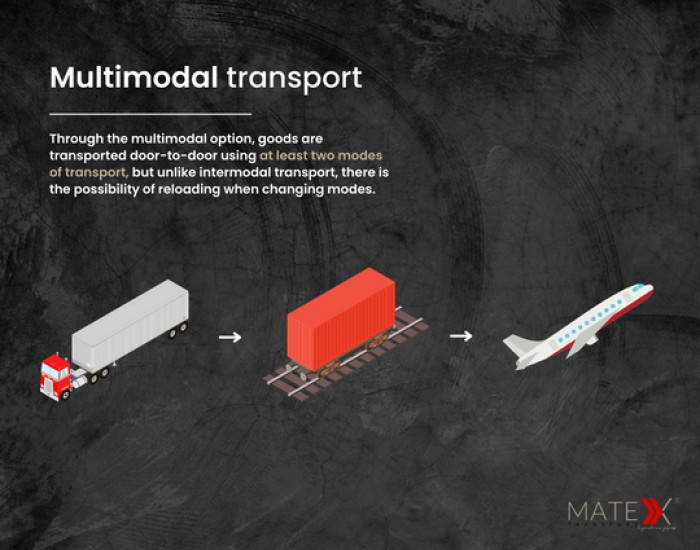are concepts that fulfil a fundamental role in the logistics industry. They are used every day throughout the supply chain. Until recently, they were often confused with each other or even treated as identical. However, there are significant differences. This mistake can be very costly, so we have prepared a comparison to dispel any doubts.
Dear Customer, we have created this blog with you in mind, so that You can benefit from our knowledge and use the information we have gained for the development of Your business. We hope You find the following article useful!
Intermodal transport is defined as transport carried out by at least two modes of transport and using one and the same load unit. For example, using a container or semi-trailer. This principle applies to the entire route. This means that there is no need to reload the goods themselves when changing modes.
This type of transport can be classified by:

Advantages of intermodal transport
This mode of freight transport is gaining an increasing number of supporters. This is because of the many advantages it offers. The main reasons for choosing intermodal transport are:
Multimodal transport is an extension of the intermodal option and is the most common way of transporting freight. Through the multimodal option, goods are transported door-to-door using at least two modes of transport, but unlike intermodal transport, there is the possibility of reloading when changing modes. Importantly, the number of branches does not affect the number of transport contracts – it remains one.

Multimodal transport - what is the reasoning behind this mode of freight transport?
Multimodal transport leads the way among all available modes of freight transport. In the logistics industry it is appreciated because of, among other things:
However, it is worth bearing in mind that the increased number of transshipment points can increase the risk of damage to goods.
Combined transport, also known as combined transport, is a form of intermodal transport. In this case, goods are transported using more than one mode of transport. Goods are transported by rail, inland waterway, sea or coastal road along the entire route. In turn, road transport is responsible for the final distribution.
Combined transport can be divided into:
As with the other modes of transport, combined (mixed) transport also has a number of advantages, which make it the preferred mode of transport for many people. What are the benefits of combined transport?
In our company, we are constantly striving to develop and deliver solutions to our Customers that respond to their needs. Dear Customer, Your needs are our solutions, so we invite You to learn more about our rail and air transport services now. We have the expertise to advise You on the right way to transport your goods when placing a transport or shipping order.
We will recommend the mode of transport that will be the most advantageous option for You and Your business. We believe that it is by putting the Customer’s well-being first that we have become a leader in the transport industry while setting new standards in it.
Our newsletter – Your guide transport industry.
Knowledge, news and more. Sign up and benefit!
I agree to receive el ectronically at the e-mail address indicated by me commercial information within the meaning of Article 10, paragraph 1 of the Act of 18 July 2002 on electronic servi ce provision from Matex Transport s.c., ul. Kilińskiego 2, 30-308 Krakow The administrator processes data following the Privacy Policy.
Our newsletter – your guide to the transport industry. Knowledge, news and more. Sign up and benefit!